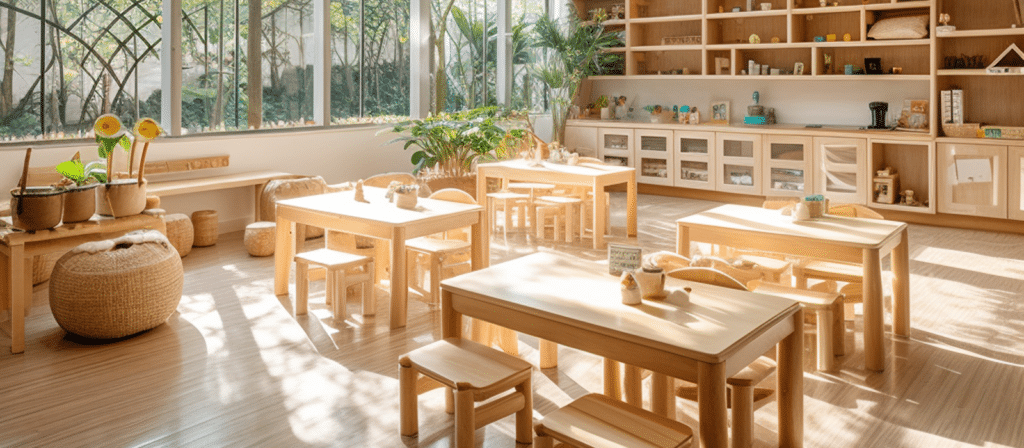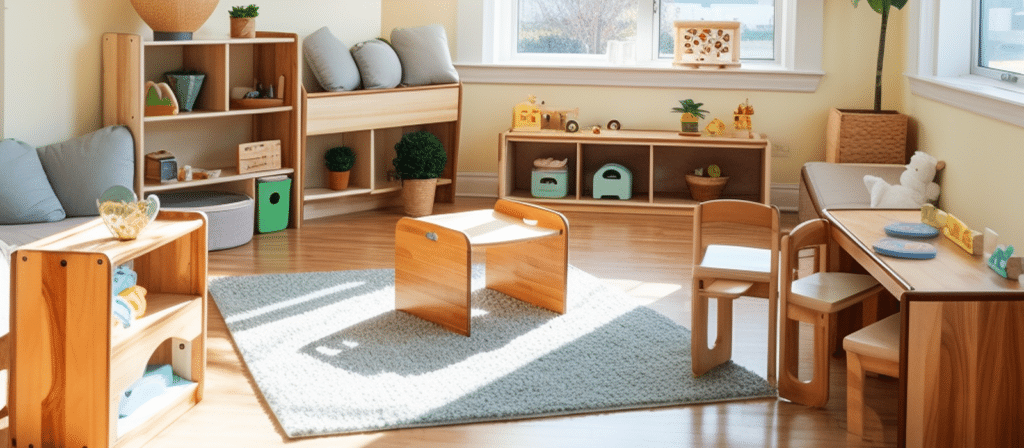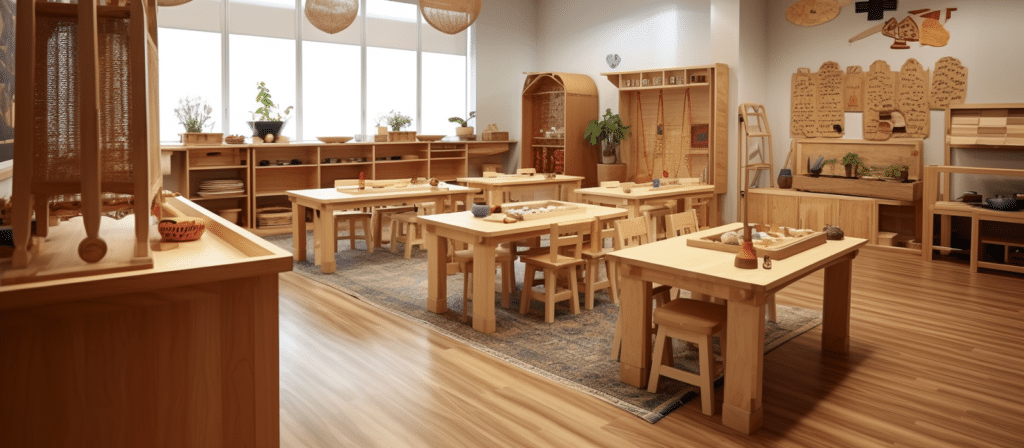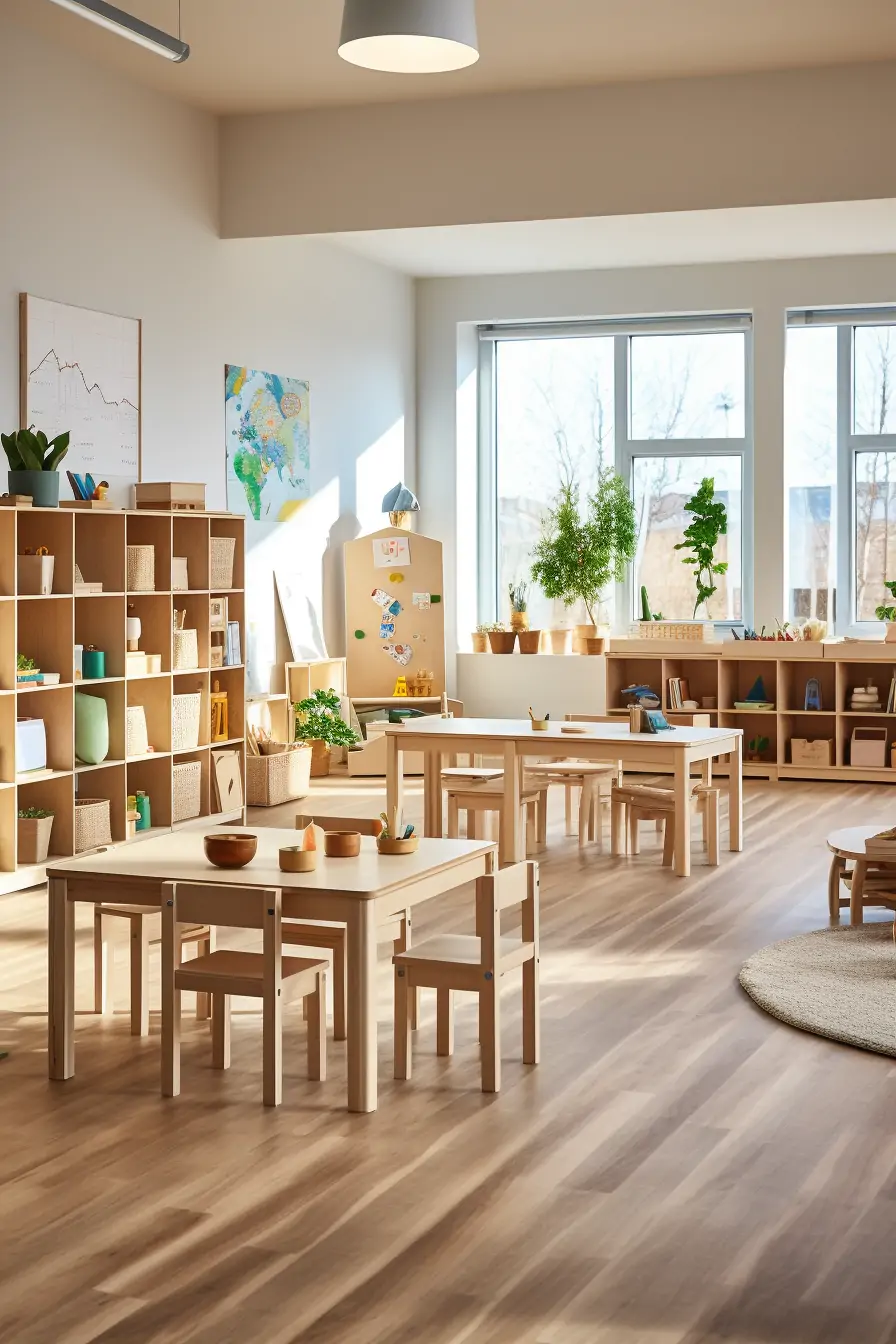Are you eager to create a Montessori-inspired learning environment in a small space? Discover how Montessori Furniture for Small Spaces can turn limited areas into thriving centers of education. Let’s explore the principles and strategies that will help you optimize learning in confined settings.
As educators and parents, we all want to provide the best learning opportunities for our children, even when space is limited. It can be a daunting task to create an engaging and functional learning environment in a small area. But fear not, Montessori furniture is here to save the day!
What is Montessori Furniture?
Montessori furniture is specifically designed to promote independence, freedom of movement, and hands-on learning. It takes inspiration from the Montessori educational approach, which emphasizes self-directed activities and the development of a child’s natural curiosity. This type of furniture is characterized by its child-sized proportions, natural materials, and simple yet functional design.
Why is Montessori Furniture Ideal for Small Spaces?
One of the main advantages of Montessori furniture is its ability to maximize space utilization. With carefully crafted pieces that cater to the needs and size of children, you can create an environment that facilitates learning without cluttering the limited space available. By incorporating Montessori principles into your small space, you can transform it into a vibrant and engaging learning hub.

Now, you might be wondering how Montessori furniture can help maximize learning in small spaces. Well, let me break it down for you.
First and foremost, Montessori furniture is designed to be child-sized. This means that it is proportionate to the size of the child, allowing them to comfortably navigate their learning environment. Imagine sitting in an oversized chair or struggling to reach materials on a high shelf. It’s not exactly conducive to a productive learning experience, is it? With Montessori furniture, children can easily access materials and engage in activities independently.
Secondly, Montessori furniture is aesthetically pleasing. Yes, you read that right! Gone are the days of clunky, mismatched furniture in the classroom or playroom. Montessori furniture is designed to be visually appealing, creating an inviting and calming atmosphere. This not only enhances the overall learning experience but also makes the most of limited space by creating a cohesive and organized environment.
Furthermore, Montessori furniture incorporates clever storage solutions. In small spaces, every square inch counts. Montessori shelves and storage units are designed to optimize vertical space, allowing you to store materials and resources in an organized manner. This not only keeps the space tidy but also makes it easier for children to find and access the materials they need for their learning activities.
In addition to the practical benefits, Montessori furniture promotes independent learning. The design and layout of the furniture encourage children to take ownership of their learning environment. They can choose where to work, select their materials, and engage in activities that align with their interests and developmental needs. This sense of autonomy fosters a love for learning and helps children develop essential life skills such as decision-making, problem-solving, and self-regulation.

How Does Montessori Furniture Support Learning?
Montessori furniture encourages independent exploration and self-directed learning. With child-sized tables, chairs, and shelves, children can easily access materials and engage in activities without constant adult assistance. This fosters a sense of autonomy and empowers children to take charge of their own learning journey.
Additionally, Montessori furniture promotes order and organization. Each piece has a specific purpose and place, teaching children to tidy up after themselves and maintain an orderly environment. This not only cultivates a sense of responsibility but also enhances cognitive development and concentration.
What are Some Examples of Montessori Furniture for Small Spaces?
- Low-Height Tables and Chairs: These allow children to comfortably sit and work at their own level, promoting proper posture and concentration. The Beechair Mini Table and Chairs set is a perfect example of Montessori-inspired furniture designed for small spaces.
- Open Shelves: Open shelves allow children to see and access materials easily, encouraging independent exploration and decision-making. The Beechair Open Shelf Unit provides ample storage space while maintaining a visually appealing and organized environment.
- Floor Mattresses: Floor mattresses provide a cozy and safe space for children to relax, read, or engage in quiet activities. The Beechair Floor Mattress is not only comfortable but also easily foldable, making it ideal for small spaces that need to be versatile.
- Child-Sized Kitchenettes: A child-sized kitchenette enables children to develop practical life skills, such as cooking, cleaning, and organizing. The Beechair Kitchenette Set is a compact and functional solution for introducing culinary exploration in limited areas.

How Can Montessori Furniture Enhance Learning in Small Spaces?
Montessori furniture creates an environment that fosters independence, creativity, and critical thinking. By incorporating these elements into your small space, you can enhance the learning experience in the following ways:
- Promoting Active Engagement: Montessori furniture encourages children to actively engage with their surroundings and materials. This hands-on approach stimulates cognitive development and allows for a deeper understanding of concepts.
- Cultivating a Sense of Ownership: Children feel a sense of ownership and responsibility when they have furniture that is specifically designed for them. This ownership fosters a positive attitude towards learning and encourages children to take pride in their environment.
- Facilitating Movement and Exploration: Montessori furniture is designed to accommodate a child’s natural desire for movement and exploration. By providing child-sized furniture and open spaces, you allow children to freely move around, promoting physical development and coordination.
- Encouraging Collaboration and Social Interaction: Montessori furniture facilitates collaboration and social interaction among children. With tables and chairs designed for small groups, children can engage in cooperative activities, enhancing their social skills and teamwork.
Conclusion
Montessori furniture is a game-changer when it comes to creating functional and engaging learning environments in small spaces. Its child-sized design, aesthetically pleasing appearance, and clever storage solutions make it a perfect fit for maximizing learning opportunities. So, why settle for cramped and uninspiring spaces when you can transform them into vibrant and inviting learning zones with Montessori furniture?










